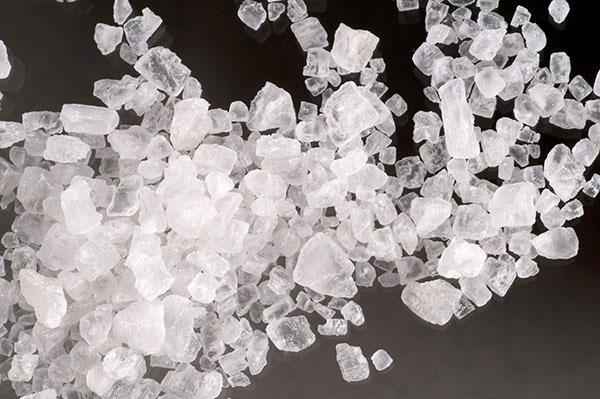
Enhancing Drug Solubility: Understanding Amorphous Solid Dispersions
In recent years, amorphous solid dispersions (ASDs) have gained significant popularity and proven to be a highly effective strategy for enhancing drug solubility. Their broad applicability across various drug types and dosing requirements has contributed to their widespread adoption. Formulation scientists strive to create a uniform and homogeneous system, where the drug molecules are evenly dispersed within the matrix. Such formulations, known as ASDs, play a vital role in the drug discovery phase by addressing the challenge of low equilibrium solubility associated with certain drug compounds.
Amorphous Solid Dispersions: Homogeneous Mixtures of API in Polymer Matrices
ASDs are composed of a drug and one or more carrier polymers, forming homogeneous and amorphous mixtures. Within the polymer matrix, the API (active pharmaceutical ingredient) molecules are uniformly dispersed. Unlike ordered crystalline structures, amorphous materials lack three-dimensional long-range ordering. Upon heating, these materials undergo a transition from a brittle glassy state to a softer rubbery consistency. The temperature at which this transition occurs is referred to as the glass transition temperature (Tg).
Enhancing Drug Solubility with Amorphous Solid Dispersions: Mechanisms and Properties
The properties of Amorphous Solid Dispersions (ASDs) help increase a drug’s solubility in water, though exactly how they do this is not fully understood. Unlike crystalline drugs, which must break their crystal structure to dissolve, ASDs dissolve more easily. This is because the drug molecules in ASDs are in a highly energetic, amorphous state. When ASDs dissolve, they create a solution with a higher drug concentration than what you get from dissolving crystalline drugs. This means ASDs can greatly improve a drug’s solubility quickly.
Pharmaceutical scientists have a wide range of polymer carriers available, including hydroxypropylmethyl cellulose (HPMC), polyvinyl pyrrolidone (PVP), hydroxypropylmethyl cellulose acetate succinate (HPMC-AS), and polyvinylpyrrolidone/vinyl acetate copolymer (PVP/VA). The selected polymer must exhibit not only satisfactory physical stability but also the ability to achieve the desired enhancement in drug solubility, while effectively maintaining the highly supersaturated drug in solution for a sufficient duration to enable optimal drug absorption.
Various manufacturing methods can be employed to produce ASDs, such as rotary evaporation, spray-drying, and hot melt extrusion (HME). Both HME and spray-drying are scalable and well-established technologies for ASD production. However, it is crucial to carefully select the appropriate technique for each ASD formulation, considering their respective advantages and potential challenges.
Amorphous Solid Dispersions (ASDs)
Benefits:
- Enhanced process control
- Improved solubility through supersaturation
- Versatility
Drawbacks:
- Complex manufacturing process
- Not viable for all Active Pharmaceutical Ingredients
- Thermodynamic instability
Spray drying plays a critical role in the pharmaceutical industry for processing drug substances with diverse physical and chemical properties. This technique involves a series of precise steps that transform a drug and polymer solution into Amorphous Solid Dispersion (ASD) particles.
Spray Drying Process: Creating Uniform Drug-Polymer Particles
To initiate the spray drying process, the drug and polymer are dissolved thoroughly in a suitable solvent, resulting in a homogeneous solution. This solution is then atomized using a specialized nozzle or atomizer, which leads to the formation of small liquid droplets. By adjusting the atomization parameters, such as the nozzle design and pressure, control over the droplet size is achieved.
Subsequently, the liquid droplets are introduced into a heated expansion chamber or drying tower. Inside the chamber, they encounter a stream of hot air or gas. The application of heat in this controlled environment causes rapid evaporation of the solvent contained within the droplets. As a result, solid particles comprising the drug and polymer constituents are formed.
The resulting ASD particles typically exist as fine powders or granules, with the drug molecules uniformly dispersed within the polymer matrix. The characteristics of the particles, including their size, shape, and structure, can be influenced by specific parameters during the spray drying process. These parameters include temperature, airflow rate, and the length of time the droplets spend in the drying chamber.
Spray Drying in Drug Production: Advantages, Limitations, and Solutions
Spray drying offers notable advantages in terms of scalability, enabling the production of ASD particles in various quantities, ranging from small-scale to large-scale production of several thousand kilograms. By carefully controlling key processing parameters such as the solvent composition, droplet size, and temperature, it is possible to achieve the desired characteristics for the ASD particles.
While acknowledging the benefits, it is essential to recognize the limitations of spray drying. One such limitation is the potential for poor powder flow characteristics, which can pose challenges when filling capsules or processing into tablets. To overcome this limitation, additional excipients and granulation techniques like roller compaction can be employed to produce granular materials with improved flow properties.
Hot Melt Extrusion: Producing Amorphous Dispersions with Benefits and Challenges
Hot melt extrusion (HME) is a commonly employed technique for the production of amorphous solid dispersions. This technique is advantageous as it does not require solvents and is considered environmentally friendly. The HME process involves mixing a powdered drug and polymer within a twin-screw, heated extruder. This mixture undergoes multiple cycles of melting and solidification, resulting in the formation of extrudates. These extrudates can then be milled or chopped into granules of the desired size. However, HME presents its own challenges, such as the potential for drug degradation, particularly with heat-labile drugs, and difficulties in processing drugs with high melting points. Overcoming these challenges can be achieved through process optimization, the use of appropriate excipients, and careful selection of suitable processing equipment.

